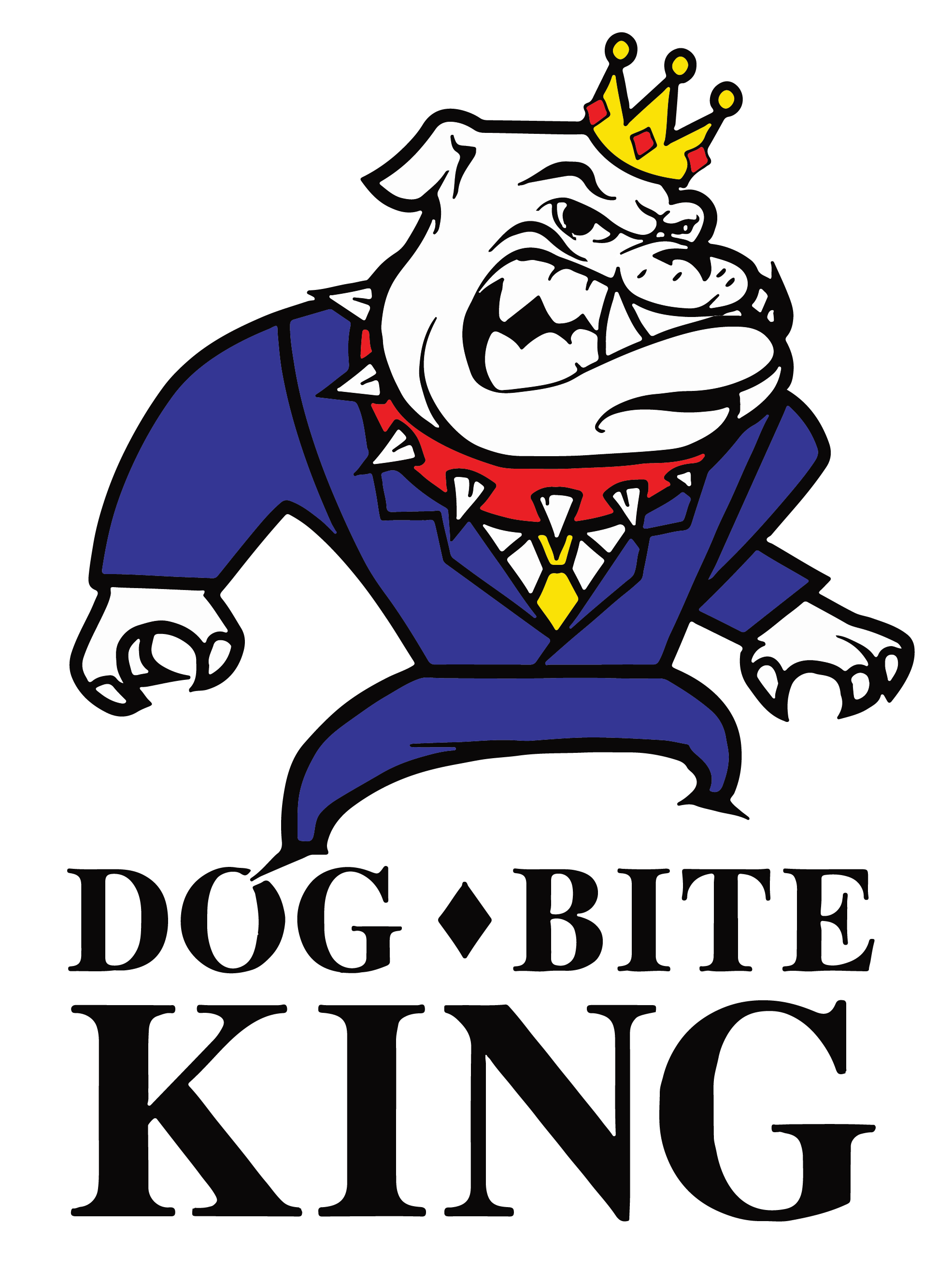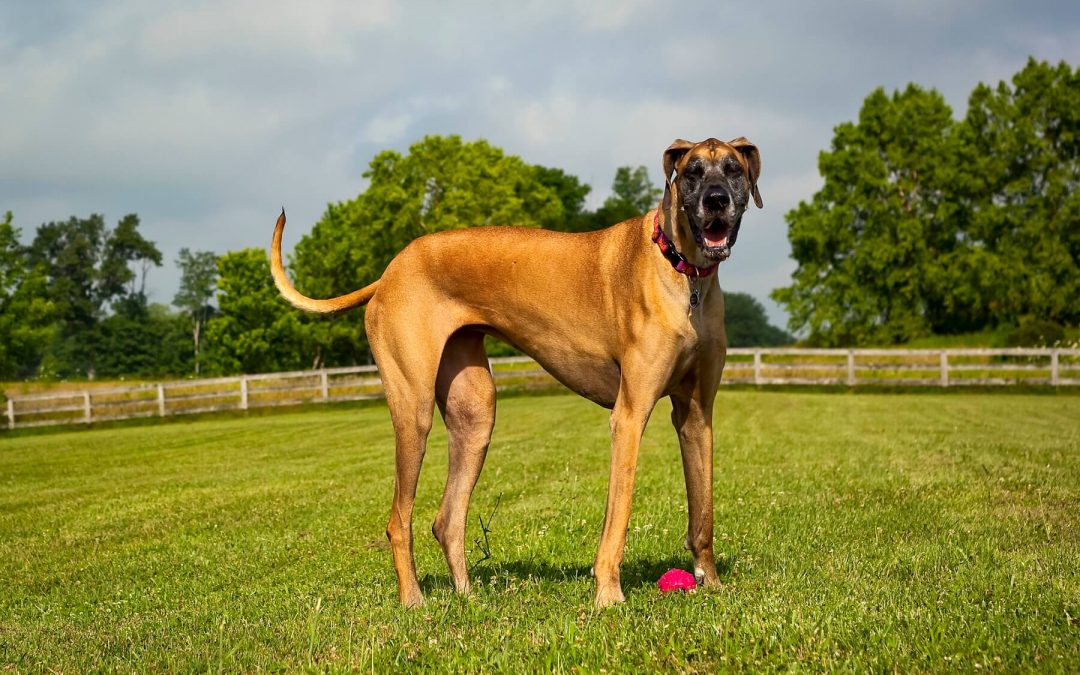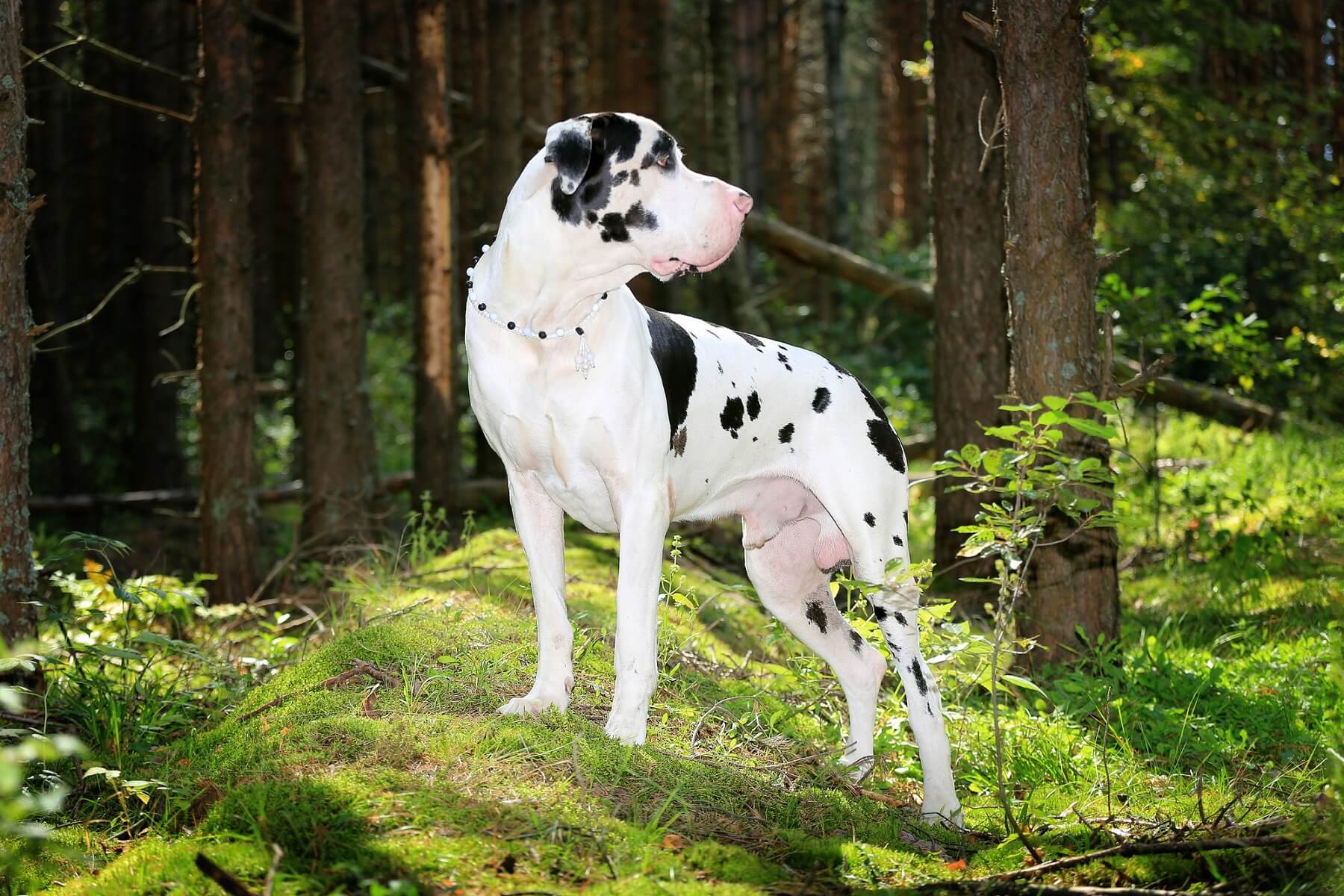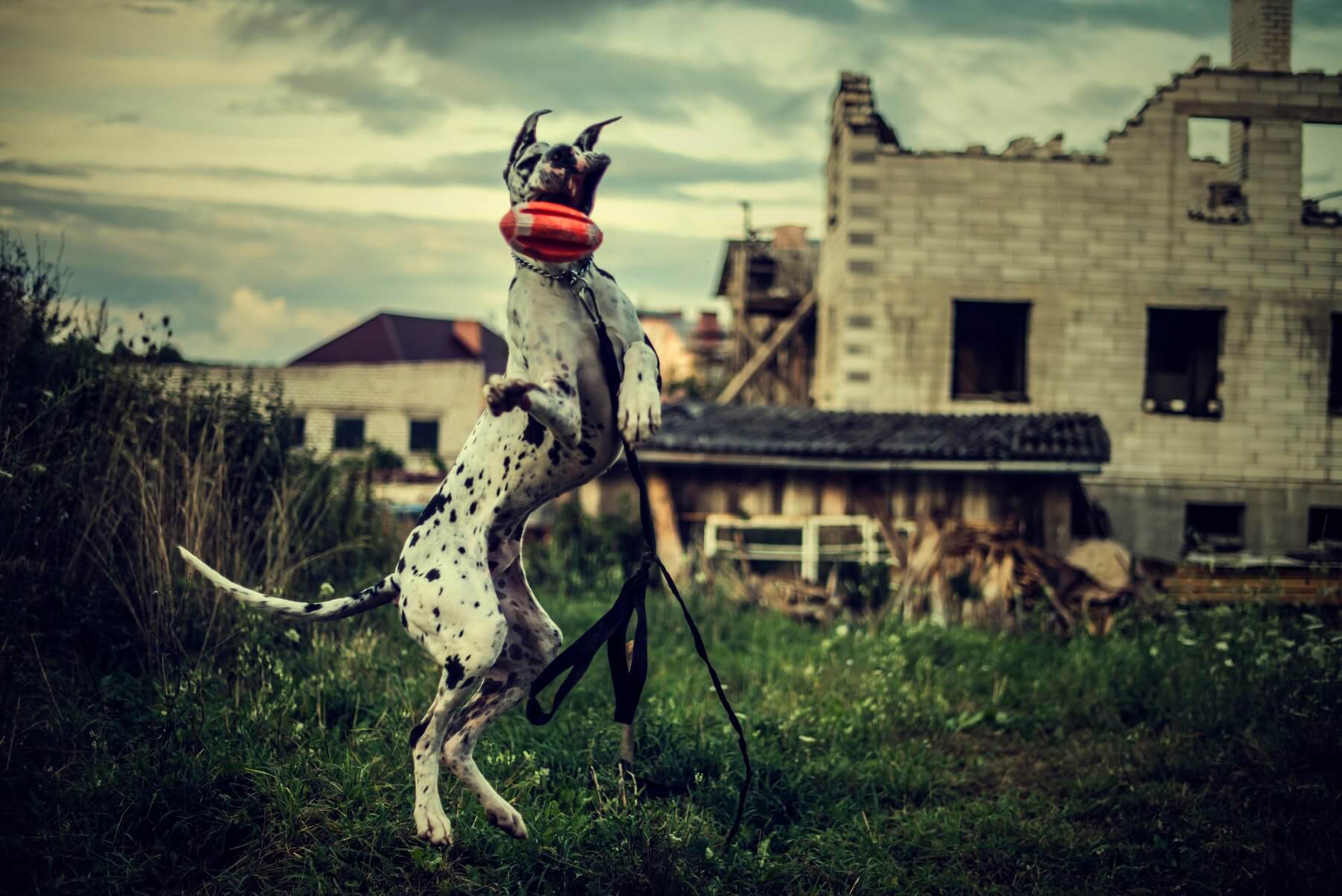Great Danes Can Be Dangerous Sources Of Bites And Attacks
The Dog Breed Known As Great Danes
Great Danes are widely assumed to be the biggest of all dog breeds around the globe. They’re renowned for their majesty and imposing presence. While they are often gentle in nature and even mild-mannered members of many families, they’re still animals. Just like any dog breed, a Great Dane can turn aggressive. They’re very territorial. When they attack, it might be with little or even no warning. The bite of a Great Dane can result in a significant impact on victims. It sometimes changes the course of their lives.
If any Great Dane starts displaying biting behavior or other forms of aggression, then it’s a substantial hazard that anyone around the dog needs to be aware of. Given the power, weight, and intimidating size of Great Danes, they’re difficult to manage if they get aggressive. This all adds up to serious danger in the case of the Great Dane attacks.
Look here for everything you should know about this breed of dog, including Great Dane characteristics, their history, risky traits, and temperament. Perhaps most crucially, learn how you can survive an attack from one of these huge dogs, what you need to do once bitten, and also how the Dog Bite King can help you.
Great Danes And Their Reputation
Great Danes aren’t usually thought of as a dangerous breed. In fact, some refer to these dogs as being ‘Apollo of Dogs’, being a reference to god in the Greek pantheon known for huge size. Even given their colossal appearance, most Great Danes come across as friendly dogs, even gentle creatures. Most of the time, this is true. However, Great Danes are also potentially dangerous, based on a combination of the individual dog’s training and any circumstances they are in at the time.
Great Danes And Their History
Don’t let the name fool you. The Great Dane breed comes from German descent without any known associations to the country of Denmark, at least that’s what canine historians say.
The breed might be four centuries old or even more, but the actual origins of the breed are murky. Great Danes are known for their power and agility, largely due to shared heritage with breeds that include Irish Greyhounds and the English Mastiff.
Around the year 1680, dogs similar to Great Danes were bred to be hunting animals for German nobility. They were called Boar Hounds, and with their power and size could easily take down wild boars when their owner commanded them to do so. Given their prowess, these dogs were useful in catching bigger games. A number of early Great Danes remained indoors, prized as guard dogs who also had majestic looks to them.
These early hunting hounds were the ancestors of modern Great Danes, who still have an impressive size and regal appearance.
How The Great Dane Name Started
In the nation of Germany, this breed got called Deutsche Dodge after the 1870s. This loosely translates simply as ‘German Dog’. This particular name didn’t take hold internationally, however. English-speaking nations, including the United States of America, adopted the terminology of Great Dane, where the breed became very popular.
The Great Dane name has a mystery surrounding it as well. Accounts that document this title’s early use are rare, although some claim that it started with a naturalist. Georges-Louis Leclerc was the Comte de Buffon. Certain legends say that this famous Frenchman personally witnessed dogs who looked a lot like German hounds when he visited 18th-century Denmark. While it’s not clear how things happened, he allegedly coined the Great Dane name for the German breed. From that, the name stuck around in common language and conversation.
Characteristics Of Great Danes
Height: Males range between 30 and 32 inches, while females range from 28 up to 30 inches.
Weight: Males range from 140 up to 180 lbs, while females come in at the 110 to 150 lb range.
Colors: Mantle, harlequin, black, blue, fawn, brindle.
Coat: Glossy, thick, short.
Ears: They are naturally floppy, and cropping them is owner-optional in many cases.
Lifespan: Typically seven years to a decade.
The primary characteristic Great Danes are known for is their tremendous physical size. Dog height gets measured from the floor or grounds up to their shoulders. Male Great Danes are usually over 30 inches tall, giving them several inches over Dobermans and German Shepards. When a Great Dane stands up on his hind legs, he’s usually taller than most people.
Height isn’t the only dimension Great Danes have the size in, because they also weigh a lot, sometimes up to 180 lbs. All this adds up to aggressive Great Danes being very hard to manage, even if owned and trained responsibly.
Great Dane coats are typically glossy and short, usually in variations of six different colors. Some are golden fawn, whereas others are a ‘blue’ shade of gray. Great Dane ears tend to be noticeable. They grow naturally in a way to fold over, although many American Great Danes get their ears cropped in order to stand upright. Ear cropping isn’t legal in numerous countries, but most of the United States doesn’t regulate this.
The American Kennel Club says that Great Danes are one of the top 15 American breeds in terms of popularity. The authority releases an annual list based on national registration figures. Great Danes have seen their popularity rise in the last few years, with their popularity higher than ever right now. That increases your chances of coming across one in your social life.
Great Danes And Their Temperament
Great Danes are known for several essential behavioral characteristics that you should be aware of:
- Typically gentle-natured
- Protective and territorial
- Relaxed
- Smart
Great Danes have come a long way from their beginnings as hunting dogs known for subduing wild animals. Their tremendous size is still intimidating to quite a few folks, but the breed is also usually friendly to most people. They’re typically laid-back, not needing the bustle of activities that other breeds have to have to stay healthy.
Even though Great Danes are typically friendly in nature, they can also be very protective and territorial. If they feel that their home, family, or personal space is under threat, then they might turn aggressive. One big reason why Great Danes bite anyone is that they assume a stranger is a threat or potential source of danger.
It’s also crucial to know that dogs are much like people in certain ways. That is, dogs are definitely individuals, and they have distinct personalities. Great Danes aren’t typically violent, but any breed has the capacity for aggression. When a Great Dane does attack, its sheer power and size make it considerably more dangerous than most other breeds. All these factors can add up to a fatal Great Dane attack.
Aspiring owners need to know the daily practicalities of owning one of these dogs. Their tails can unintentionally knock over furniture and even people. In their youth, they can be particularly clumsy. Rookie owners can certainly do worse than Great Danes, but they should know that big dogs can scare strangers. Also, without proper training and management, these dogs can do a lot of damage to a home, even if they don’t hurt any actual people.
Characteristic Ratings Of Great Danes On A 5-Star Scale
Size: 5
Power: 4
Intelligence: 3
Suitable For New Owners: 2
Energy Level: 2
Protective: 4
Territorial: 5
Tolerates Other Animals: 3
Playfulness: 2
Health/Wellness: 1
A Great Dane Was The Biggest Dog In The World
Great Danes are huge dogs, the biggest around the globe. It’s official because if you look it up in the Guinness World Records, Zeus was a lumbering giant who earned the title of tallest dog.
Zeus was owned by a Michigan family and took the record books by storm in 2011 by measuring it at 44 inches at the tops of his intimidating shoulders. That left him the tallest Great Dane known to man and the tallest dog from any breed. When Zeus stood up on hind legs, the measurements came in at 7 feet 4 inches. That’s taller than most NBA players.
Zeus’s owner claimed the dog was gentle, even as a giant. Ironically, a vet had to measure him because tape measures scared Zeus. Like many other bigger dogs, the life of Zeus was a short one. He passed away in 2014, even before hitting his sixth birthday.
Prior to Zeus taking the crown, a Great Dane appropriately named Giant George held the record. From his shoulders, he measured 43 inches. He was a 2010 guest on Oprah Winfrey’s show.
Great Danes Throughout Pop Culture
A number of Great Danes have been seen in pop culture, from TV screens to the silver screen, as well as in cartoons and comics. Many Great Dane appearances offer a comedic presentation of the breed, which can be misleading about the dangerous potential of these former hunting dogs. The following are just a handful of the more famous instances of Great Danes across pop culture:
Marmaduke: This was a newspaper cartoon strip that run for a long time. Featuring the Winslow family, it revolved around Marmaduke’s antics, a whacky Great Dane. Illustrator Brad Anderson created and wrote the strip. It launched back in 1954, and Anderson was involved with the creative efforts of the strip in many newspapers until he died in 2015. Marmaduke was made into a 2010 movie voiced by Owen Wilson. A live-action dog was digitally altered to look like he was speaking.
Fang (Harry Potter): This entire franchise is full of magical animals, although one animal was far more rooted in reality than the rest. Called a Boar Hound in the franchise, the Great Dane of Fang was owned by Hagrid, who served as a groundskeeper for Hogwarts. Interestingly, Neapolitan Mastiffs were used in the movies for Fang, instead of Great Danes.
Scooby-Doo: This dog might be the most famous of all pop culture Great Danes. This franchise is known for its longevity, starting as a 1960s animated series that has returned time and again in many forms. The titular character is actually quite afraid of a Great Dane, but he joins up with friends who like solving mysteries. Iwao Takamoto was the designer for Scooby-Doo when working for Hanna-Barbera, an animation company. Takamoto actually consulted a professional breeder in order to give Scooby specific features that purebreds aren’t known for, including bowed legs and a sloped chin and back.
What Makes A Great Dane Bite?
Numerous factors might trigger a Great Dane bite. These are some of the primary ones:
Protectiveness And Territorial Possession
Any dog can be a bit territorial, but these take it to a high degree. Great Danes are tremendously protective of the property they are own. If these dogs see animals or people that they don’t recognize and feel threatened by, then they will attack. Great Danes are typically relaxed and even laid-back, but they still have a naturally high prey drive and can get worked up.
Even Great Danes known for social ease and friendliness might fall susceptible to biting, growling, barking, and other aggressive tendencies if their space gets challenged enough.
A good number of Great Dane owners indicate that their dogs exhibit their most aggressive tendencies when strangers come to their home. In comparison, their dogs are a lot calmer if they meet other dogs and strangers when in neutral locations.
Pain In Great Danes
This breed has tendencies towards particular health issues that result in serious levels of pain when left untreated. A dog that is in pain can wind up lashing out towards others violently, even if such behavior is uncharacteristic. Read the next section about health issues in this breed for more details.
Mistreatment Leads To Aggressive Tendencies
Another possible cause of behavioral issues and aggression in this breed is when humans mistreat them. Dogs usually form bonds with human beings. When abandoned, mistreated, or abused, the animal can display very unpredictable attitudes towards strangers and even future owners. This might involve Great Dane bites and attacks without much warning, given how they fear people and don’t trust them.
Health Issues With Great Danes
Great Danes aren’t known for their longevity. Their lifespans can be as short as six years and maybe hit a ceiling of 10 years. As with many other bigger breeds, these dogs can wind up with substantial health complications in later life.
Owners shouldn’t over-exert younger Danes. Their fast growth might wind up leading to joint and bone issues. Danes also have a high level of risk for developing hip dysplasia, a condition with their hip socket that leads to arthritic pain and potentially lameness in the most serious of cases. Studies show that hip dysplasia can be a tremendous source of potential dog aggression.
The Autonomous University in Barcelona had a research team look at many dog breeds, specifically analyzing situations of violence and what triggered the known aggression. They published their results in the March 2012 issue of the Journal of Veterinary Behavior, showing that the majority of aggressive dogs were suffering pain at the time, leading to their outbursts, bites, attacks, and other forms of violence. Hip dysplasia topped the list of pain sources based on the frequency of occurrence, demonstrating a high level of risk of Great Danes suffering pain turning to aggression as an outlet.
Great Danes unfortunately also carry a high level of risk for genetic heart issues, as they carry a specific gene known to result in health conditions, including blindness and deafness.
Bite Attacks From Great Danes
Great Danes Nevada, as a breed, don’t attack as often as others, but they do occur. Given the raw power and sheer size of this breed, Great Dane bites and attacks can wind up leading to significant results, including wounds, injuries, and even worse.
Accurate dog bite data is rare in terms of breaking it down by breed. Having said that, Merritt Clifton did one comprehensive study. He was the editor for the publication Animals 24-7. The study published recorded numerous dog attacks and broke them down by breed. The research primarily used media reports as a major source of data, and the research covered over 30 years from the early 1980s to the mid-20-teens.
Great Danes almost made the top-10 for most dangerous animals. In the recorded time period, over three dozen attacks happened. Most of the victims happened to be kids, three attacks lead to a fatality, and more than half maimed victims.
Case Studies Involving Great Dane Attacks
Australia, March 2018: Great Dane Mauls A Young Boy
A 3-yo.child suffered substantial injuries when a Great Dane mauled him outside of his home. Tom Higgins was riding his bike while on his own property when the dog of a neighbor got out through an open gate.
The big Great Dane mauled the child, leaving him with major facial, back, and neck injuries. Emergency surgery was necessary to re-attach Tom’s ear.
The dog owner reported that his Great Dane didn’t like bikes, and that might have lead to its attack. This particular incident highlights how any breed can have particular personality quirks that trigger violence, despite the general temperament of a breed.
Colorado, November 2018: Great Dane Kills A Poodle
A poodle owner was walking his dog, Nick, through a Colorado park. They intersected with another dog owner, who was walking a Great Dane. As they passed, the Great Dane lunged at the obviously smaller poodle before biting into it and shaking it.
Nick’s injuries were significant enough to require him to be put down. Nick’s owner sued the other dog owner, who wound up responsible for thousands in financial compensation.
Surviving When A Great Dane Decides To Attack
Any dog attack is a big deal. Even if you get away without a scratch, it’s terrifying. Trauma can result afterward, if not immediately. Great Danes and their bites can be fatal, so take the following steps to be sure you live.
If you see aggressive-appearing dogs, like Great Danes you don’t know, then stay away from them. Great Danes are at their most dangerous is a stranger approaches them in their territory. However, they can also attack when in neutral locations. Hostile dogs that are growling or barking need to be avoided.
1. Don’t engage aggressive dogs. If an aggressive-acting Great Dane approaches you, keep still as much as you can. Don’t make eye contact, don’t run, don’t wave your arms, and certainly don’t try to scare it off by making loud noises. Dogs will usually lose interest.
2. Protect yourself with anything you have at hand. Get your hands on anything you can use as a buffer from a Great Dane attack. Bags and clothing are among the items that might deflect bites because the dog can’t clamp his teeth into your flesh.
3. Try to avoid getting knocked over. Great Danes are big and powerful and can easily knock human adults to the ground. This is when victims are at their most defenseless and also when violent dogs get more dangerous. Stay on your feet whatever you do.
4. Fight back until you can get to safety. The imposing size of a Great Dane makes it hard to fight back. However, if you find yourself sustaining an attack and have to fight back, try to aim for any sensitive areas. This really is a last resort because responding with physical violence to a violent Great Dane is likely to make their attack even worse. You have to get to somewhere safe. Find high ground it can’t get to or put some solid wall or door between you and the attacking dog.
What To Do After A Great Dane Bite
Legal action might be the last thing you think about after getting a dog bite, as these are scary situations that result in substantial and long-lasting injuries. These include but aren’t limited to the following:
- Torn flesh
- Puncture wounds
- Infections
- Damage to tendons, ligaments, and muscles
- Psychological trauma
Given all of this, your first step after a dog bite injury is always looking for medical attention and then contacting law enforcement. Your injuries and how severe they are will decide if you need emergency treatment or just a doctor visit.
Legal action is the next step to consider once you’re out of danger and all your injuries are handled.
Dog bites can be serious, leading to pain and suffering. Suing an owner after a Great Dane bite can be a hard decision, but it is sometimes the best thing to do, especially if you might be due compensation for costs like medical expenses.
If you’ve been a victim of a dog bite and want to pursue legal remedies, then consider the following steps:
1. Getting images or video of the actual attack when possible
2. Getting a comprehensive synopsis about your injuries
3. Documenting the incident scene with a detailed attack account
4. Getting copies of the incident police report and medical reports from treating bite wounds
5. Getting witness accounts and the contact details for everyone who witnessed the incident
If you need a dog bite lawyer in the state of Nevada, then consult the Dog Bite King Las Vegas. He’s been practicing law for decades, including arguing a murder trial before the Supreme Court itself. He’s got the experience in handling dog bite cases you need to get the compensation, settlement negotiation, and trial assistance you need.
For more information on how https://www.dogbitekinglasvegas.com/ can help you with Great Dane Bites, please contact us at (702) 364-2483, or visit us here:
Dog Bite King Law Group
625 S 6th Street Suite 200 Las Vegas, NV 89101



